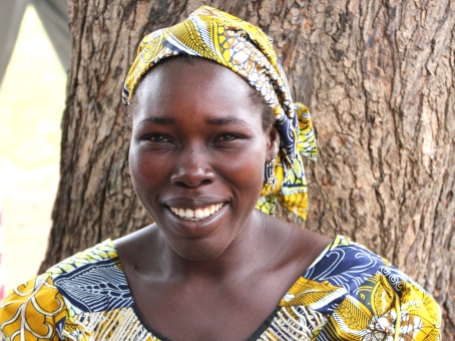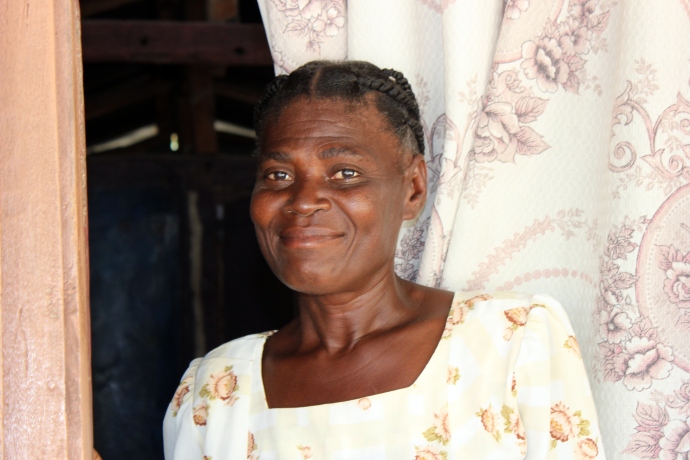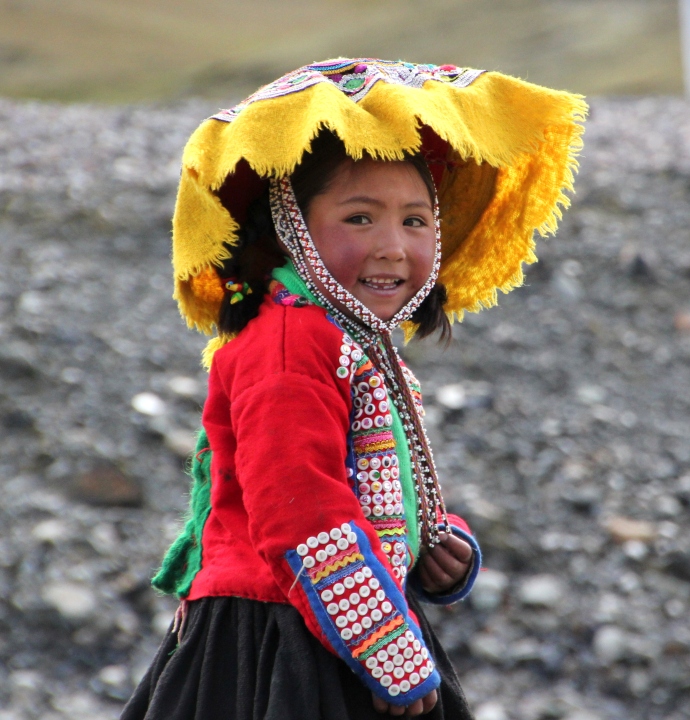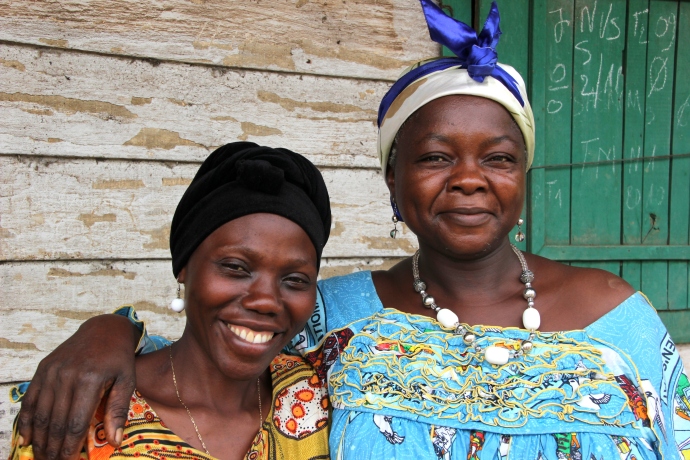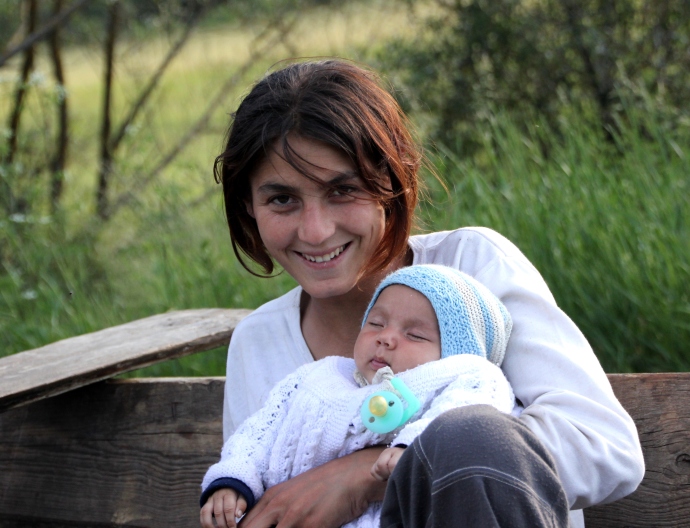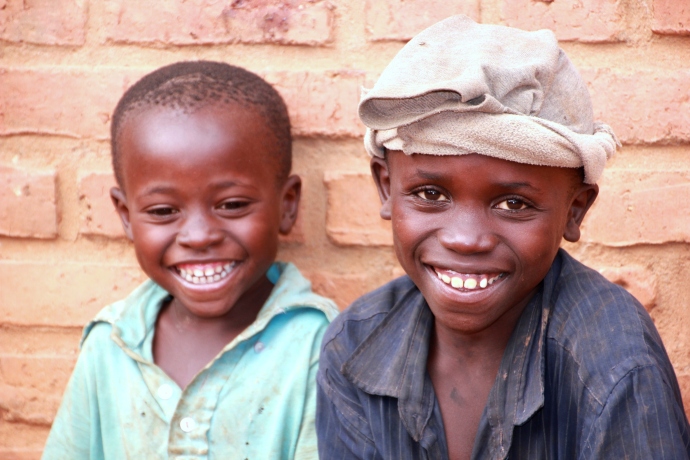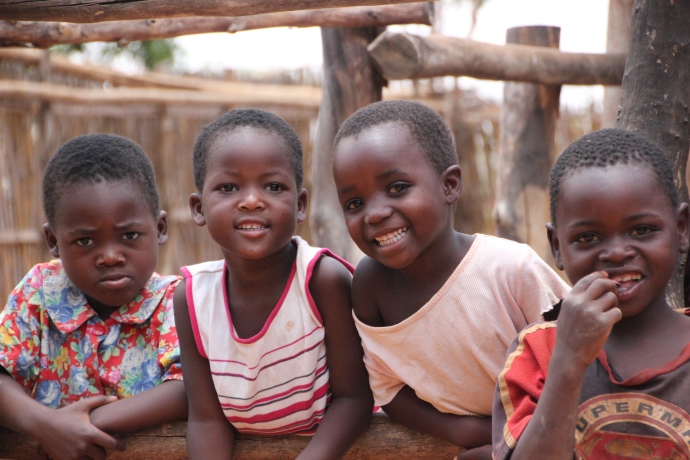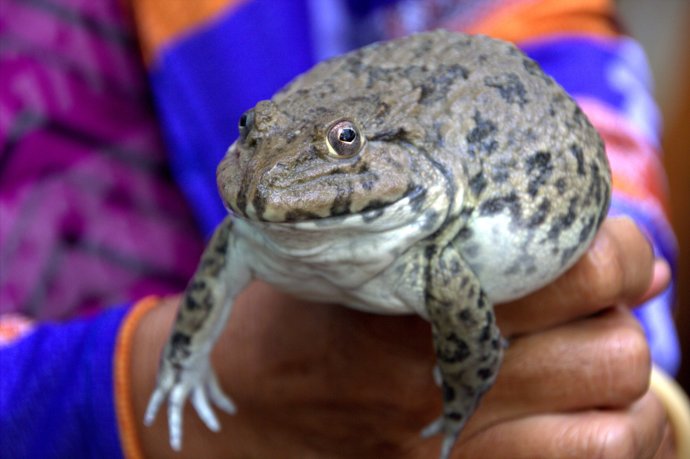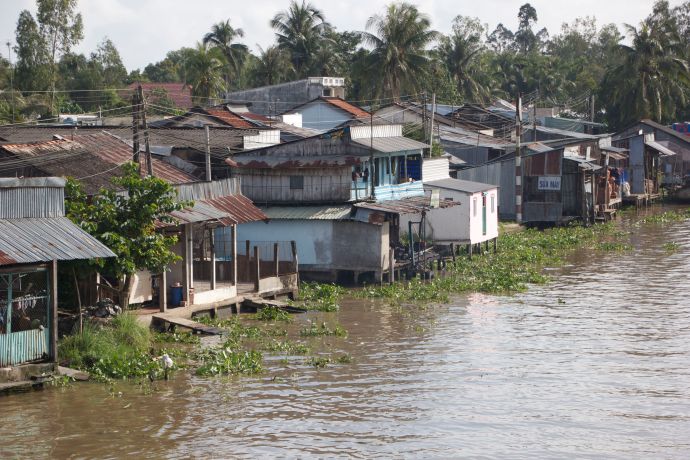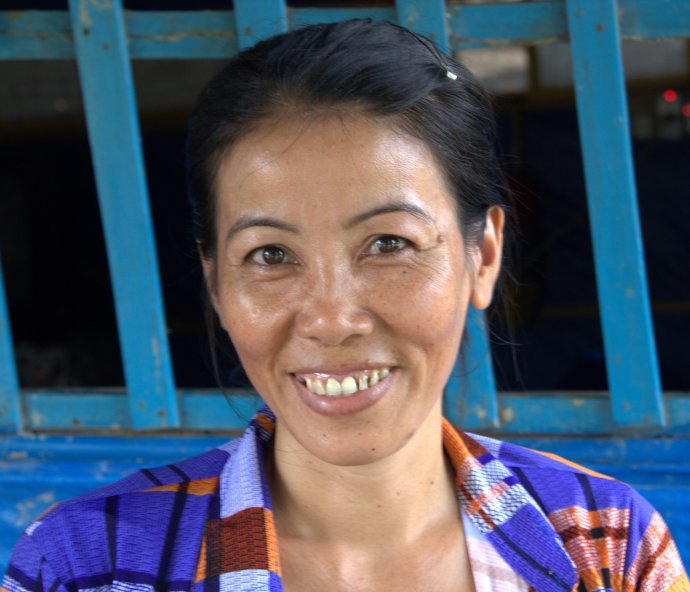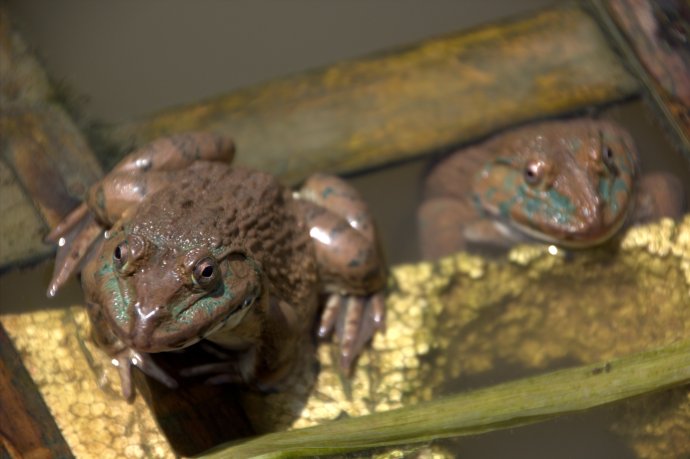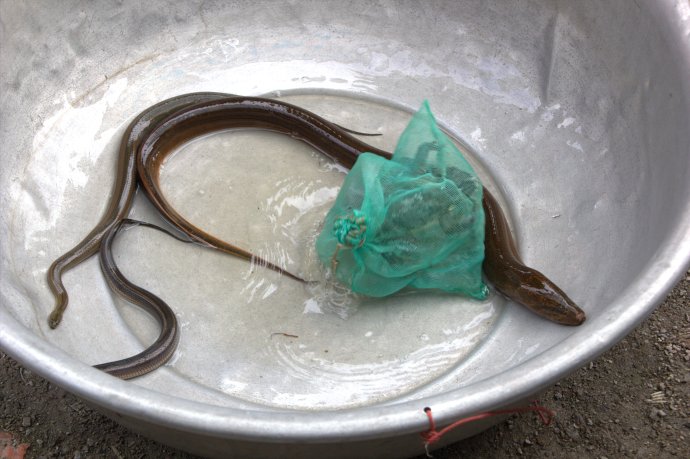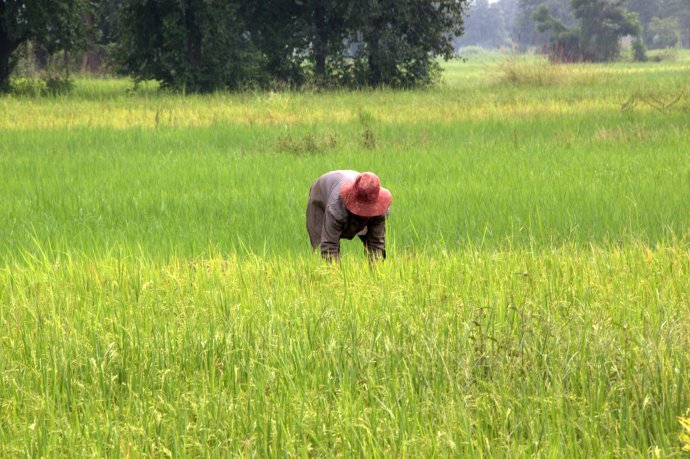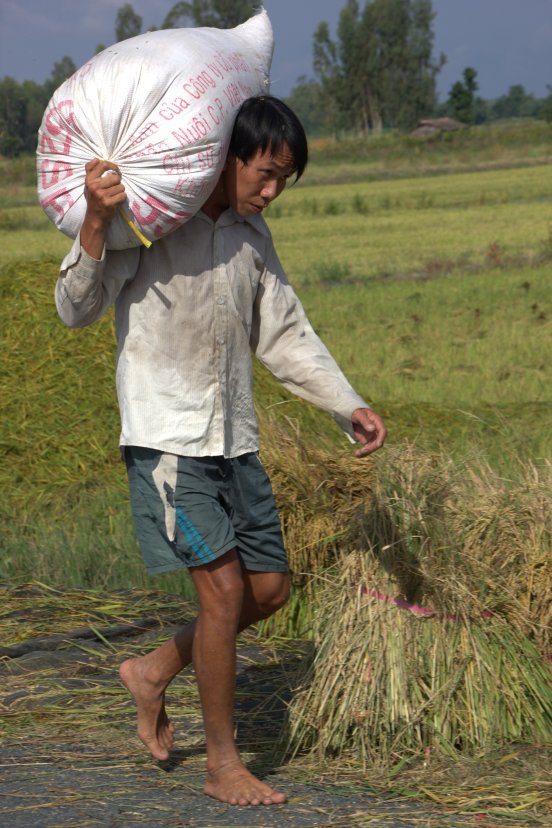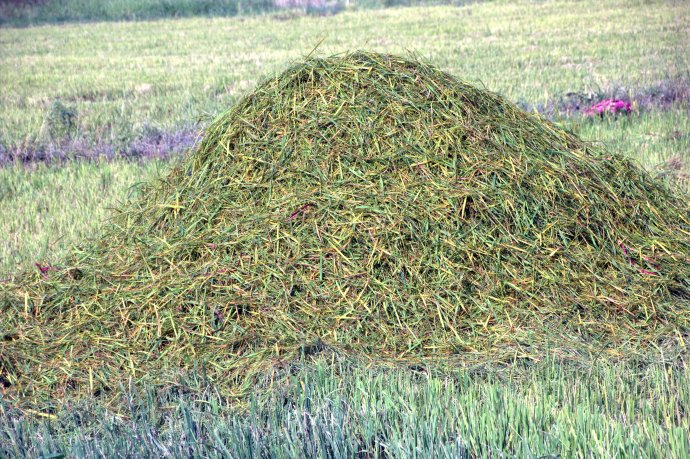 I hate to pick favorites (my favorite country is always the last one I’ve been to). But in every country I visit with Heifer, there will be (at least) one person that I can’t get out of my mind. A person that I know I’ll be thinking about and worrying about for years to come. In Vietnam, that person was Thach Thi Sa Phinh of Koko Village.
I hate to pick favorites (my favorite country is always the last one I’ve been to). But in every country I visit with Heifer, there will be (at least) one person that I can’t get out of my mind. A person that I know I’ll be thinking about and worrying about for years to come. In Vietnam, that person was Thach Thi Sa Phinh of Koko Village.

Whatever she’s selling, I’m buying – what a cheerful face!!
Pretty Koko town, population 718, in Suc Thong province lies in the heart of the Mekong Delta and is primarily a Khmer community. The Khmer ethnic group, originally from Cambodia, seems to be regarded by the hard-working Vietnamese as an obstinately poor group that gets an inordinate amount of help from the government– but from what I saw in Phinh’s household, that stereotype is miles from reality.

Phinh & Quy, quietly talking business under the gaze of the Buddha.
Phinh and her husband Kim Sa Quy are in their early 30s with three children. They joined Heifer’s Self-Help Group in 2010 and received a heifer in August that year. (That cow is now blessedly pregnant.)

Phinh is gentle and tender with everything — even her heifer.
Then, with a $100 revolving loan from Heifer, Phinh opened a small business stall in her house, selling necessities like tea, seasonings, cookies, sugar, flour, and oil. Every day she and her husband get up at 3 a.m. and drive their motorscooter to a big market an hour away, buy and load up 15 kilograms of fish, pork and vegetables, and bring it all home to sell, opening their store at 6 a.m. when people stream to Phinh’s house to buy food they can quickly cook and take with them to the fields where they’ll spend the day working.
Phinh grew up very poor and can’t read or write but she’s taught herself to do numbers; her 12-year old daughter helps write the customers’ names and keep the books. Because no one in Koko has much money, everyone buys from Phinh on credit and she is repaid at harvest time, without fail.
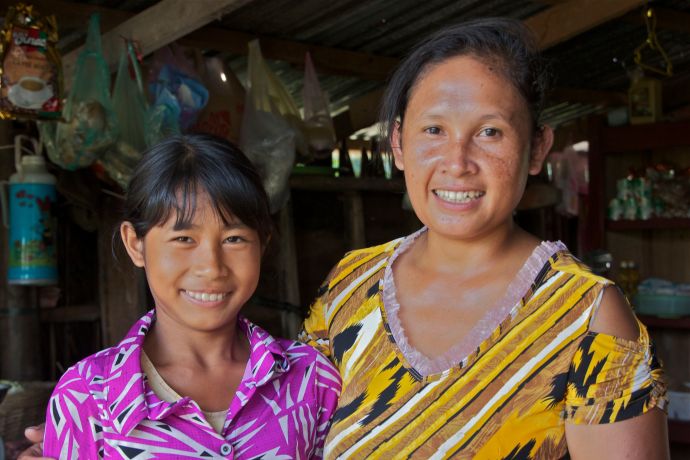
A good team… Phinh runs the store, her daughter keeps the books.
After the shopping surge ends at about 8 a.m., Phinh goes to tend her 2,000 square-meter lotus field that’s a bit of a walk from the house. She and her husband, who works day labor, saved $1,500 and then bought another 3,000 square meters, which they are devoting to growing grass for their cow, a little rice, and bon-bons (I couldn’t find a translation but stubbornly kept visualizing a field of gorgeous chocolates).
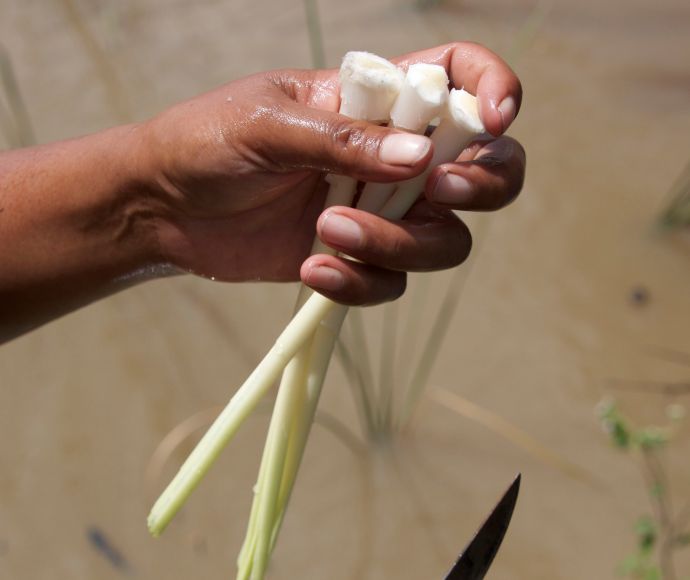
These are the real bon-bons and yes, that is Phinh’s very sharp knife.
Of course, I was dying to see both fields, so we trekked out through the mud and sat admiring the lotus plants that will earn Phinh $20 every 3 days. She learned how to grow lotus from her grandfather and knows how to pick each root at just the right time – individually plucking each plant from its watery home. Twice a week she harvests 20 kilos of lotus root (it’s SO delicious!) and sells it for $1/kilo at her store.

The original lotus position.
Phinh’s bonbons in her new field looked like baby leeks but tasted sort of sweet. Those vegetables are collected once a month and sell for about 55 cents/kilo (75 cents) during the lunar festival. Her new field will produce 300 kilograms in a year’s time, which means that all her wading through thigh-deep water and bending over harvesting each root will yield about $150.
As we were sitting with our toes in the water, talking about my life and hers, Phinh said poignantly, half in jest, “Our life here is so hard. Why don’t you take me back to the United States with you?”
It was so pretty in that field, I couldn’t imagine wanting to leave, but then, I also could see the incomprehensible difficulty of life here. And I knew Phinh was worried about her oldest daughter, who had just quit school after Grade 5 so she could stay home and help out with the younger kids (5 and 3) while her parents are working so hard in the fields and store.
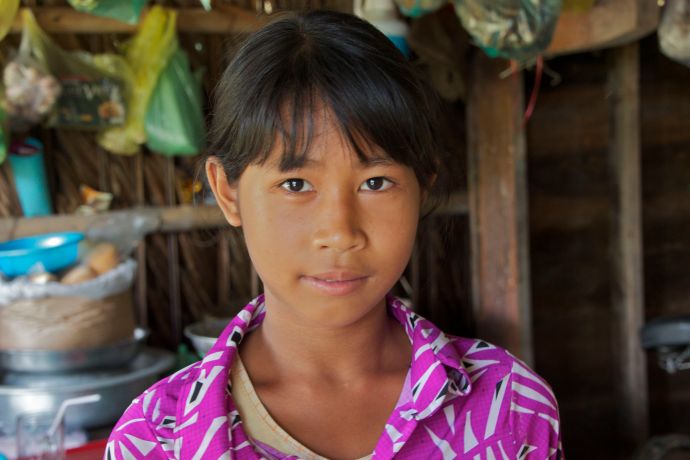
Such a smart, beautiful girl .. I hate that she’s not in school!
Phinh and Quy have bought her a bicycle to try to persuade her to go back to school, but she feels it’s more important to help her parents with all their work. And that’s kind of breaking Phinh’s heart, although she is deeply touched by her daughter’s sense of devotion. I was torn by my undying belief that education is the key to a better future, and my feeling that I couldn’t possibly understand the complexity of what this family is going through.

Saying goodbye is hard to do.
But what I knew for sure was that whatever happened in the immediate future, Phinh’s family was moving forward. I wished I could bring some of America’s great abundance to this beautiful little family, but I also know Heifer already has. Now it’s up to you & me (and Phinh and Quy) to keep it going.
Godspeed, Phinh … you’re in my heart!





